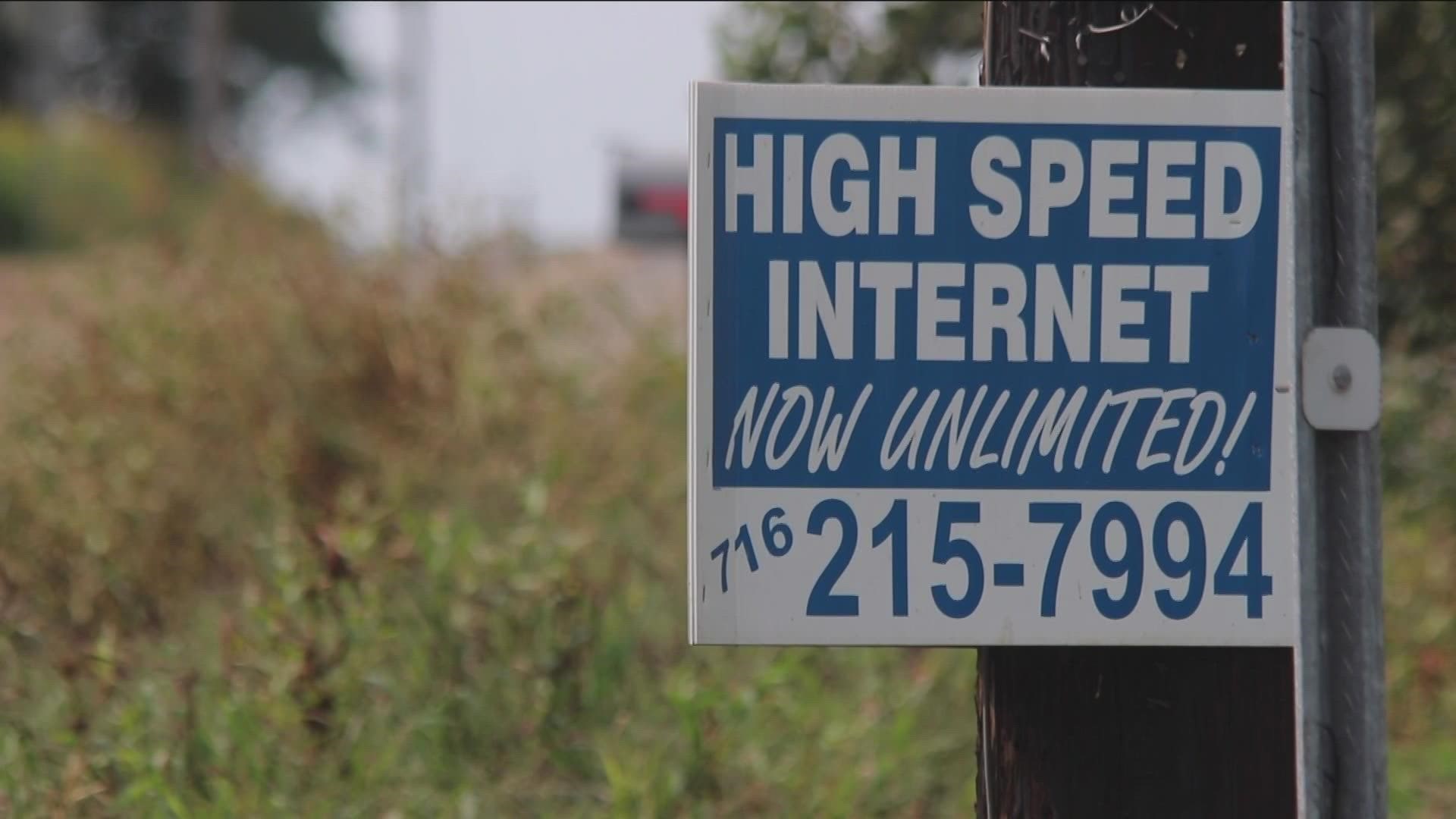BUFFALO, N.Y. — Back in November, the Federal Communications Commission released a new nationwide broadband availability map. Coinciding with that release was the ability for the public to challenge, for the first time ever, that data.
"No one has done this type of challenge process for these maps before because it's an entirely new process," said Joshua Breitbart, senior VP of New York State's ConnectAll Office.
Breitbart oversees the states broadband efforts in his roll at the CAO, which operates under the umbrella of Empire State Development.
The state is urging all New Yorkers to check the map and verify that the information on the map is accurate. If it's not, Breitbart says challenge it.
"If you know that you don't have service, if you've been told you can't get it to your location, you can go to that map and check it and provide that information," Breitbart said.
Obviously, how do you do that if you don't have internet access at your house? The state says it has coordinated with local libraries to help residents submit a challenge.
"That's why we're working with libraries to support people who come in and have questions about broadband service," Breitbart said. "Whether it's just sign up for the affordable connectivity program, or check their service on the map, to make sure that that map is accurate."
As WGRZ has reported for over three years, there are fundamental problems with the way broadband availability data is collected.
Prior to the new map, the FCC would collect data at the census tract level. That means if one address in a census block had access then by default the entire block would have it, regardless if that was true.
Now the map, as the FCC claims, obtains data at the address level.
But there are still inaccuracies.
There are several addresses WGRZ has been tracking over the years to see if accuracy in the broadband availability data has improved.
Right now the FCC map says Charter offers 1Gb/s service in parts of Genesee County, particularly several roads between Elba and Oakfield. 2 On Your Side has obtained and viewed multiple documents that say that service isn't offered, or that new lines would need to be run to houses at owners expense.
This is an instance where the FCC map could be challenged.
Additionally, the new FCC map only provides data for availability of internet access, and not the quality of service nor any affordability data. In a city like Buffalo, where there is technically widespread availability, the quality of service isn't measured.
So how do you challenge the FCC Map?
- Enter your address on the FCC Broadband Map site.
- Zoom in to ensure you have the right location.
- If your location has green dot, indicating service is available, and you don't select the "availability challenge" link on the right side of the website.
- A new dialogue box will pop on on screen, asking you to select which provider you are challenging. Select whichever provider you're challenging.
- Follow the prompts to enter information such as your name, address and select what you're actually challenging.
- For example, if the map says you have service, and you don't, you would select "provider does not offer the technology reported to be available at this location."
- Additionally, you can upload any supplemental evidence of the challenge, such as a letter from the provider saying they don't offer that service at your address, as part of your challenge.
- When you're finished hit submit.
The first deadline for challenges is January 13, this is because a new round of federal funding will be announced in June and the FCC map is important for that funding distribution.

